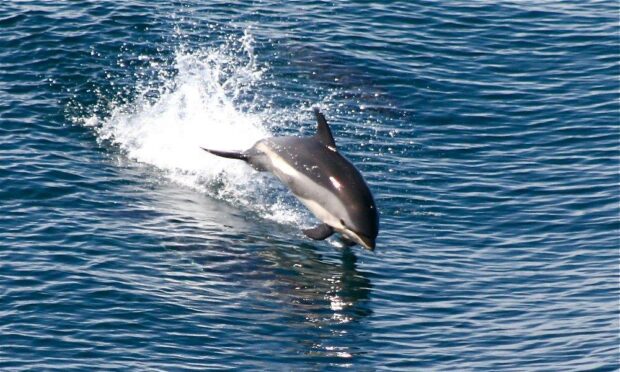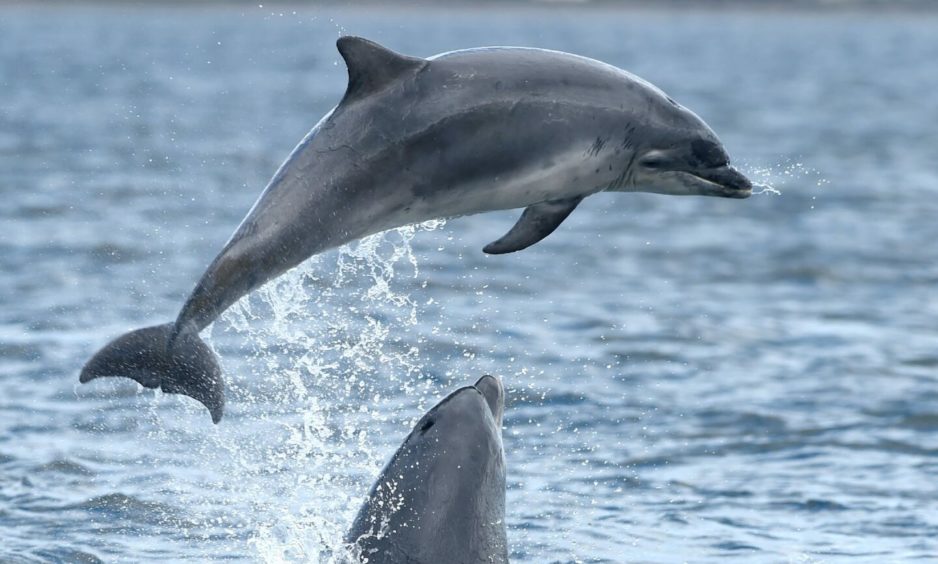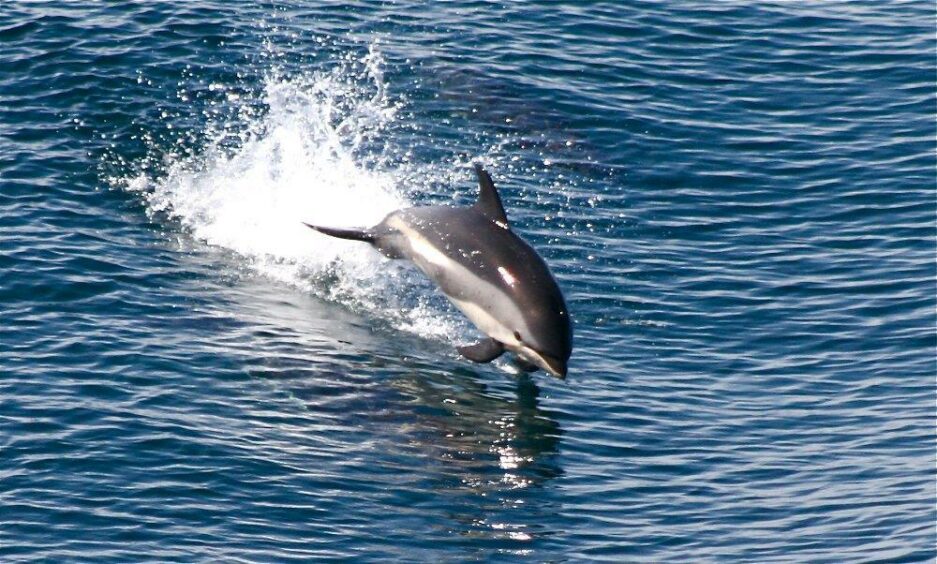Marine scientists are delving into the secret world of an elusive species of dolphin by examining their unique sounds for the first time.
Unlike the better-known common and bottlenose dolphins, the Atlantic white-sided dolphin prefers the deep ocean to coastal waters and is rarely seen by humans.
The species is so poorly understood in science that there are no accurate estimates on population size, although the dolphin is hunted in the Faroe Islands.
Recordings of dolphin to be examined
Now scientists at the Scottish Association for Marine Science (SAMS) in Oban plan to examine recordings of Atlantic white-sided dolphins to describe its vocal behaviour – or acoustic repertoire.
By documenting the dolphin’s unique sounds, the team will provide a crucial baseline for further studies to learn more about this secretive cetacean.
Their project, funded by the Royal Society of Edinburgh, will document sounds such as the dolphins’ echolocation clicks and the duration and pitch of their whistles.
SAMS fellow and marine mammal expert Susannah Calderan recently compiled a report on the species that concluded there were no reliable population estimates available for the species, leaving them potentially vulnerable.
‘Out of sight, out of mind’
She said: “For Atlantic white-sided dolphins it can be a case of ‘out of sight, out of mind’.
“It is more straightforward to study bottlenose dolphins because they are a coastal species; we have more of an idea where they are going to be. White-sided dolphins are usually on the continental shelf or further out in the ocean.
“When we do find them, they don’t often ‘play’ with the boats and, because of their speed, are very hard to photograph.”
She added: “We have recordings of white-sided dolphins – they have an unusual whistle that sounds like a space alien – but no-one has documented the acoustic repertoire in detail before.”
Dolphins don’t fall under the various protections of individual countries
Because Atlantic white-sided dolphins are primarily an offshore species, they don’t fall under the various protections of individual countries – another reason no major research studies have been undertaken.
The SAMS team and colleagues have collated recordings from various sources from the eastern and western North Atlantic.
By examining all these sounds, they can start to build a blueprint, which can be used to train computer systems to detect these sounds automatically in long-term recordings.
The system effectively “learns” what a certain species sounds like and is able to filter these sounds from large data sets.
‘We need to establish a baseline of its acoustic repertoire’
SAMS marine mammal ecologist Dr Denise Risch said: “It is remarkable that a marine mammal species we know about – although not often seen – has not really been acoustically described.
“We need to establish a baseline of its acoustic repertoire and then build machine learning systems to be used in monitoring the species.
“Establishing the size of the population is important but we also need to know where they are, given that many marine mammals are changing their distribution to follow prey, which themselves are changing habitats due to climate change.
She added: “It is also important that we know more marine mammal movements when considering the siting of offshore wind farms.”













